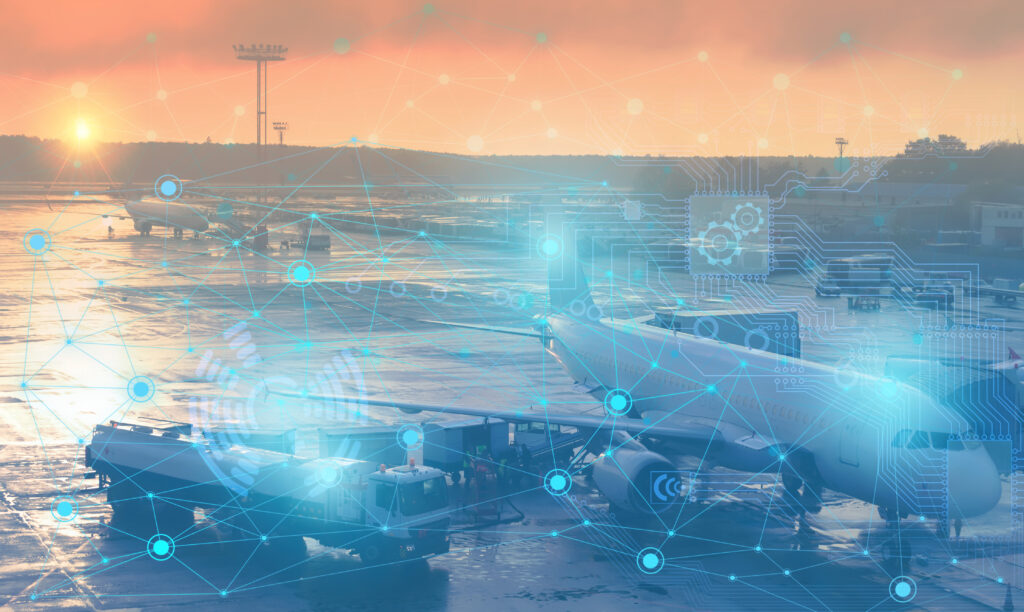Digital Twins For Airports—How We’re Helping Improve Air Travel

Digitalization Of The Aerotropolis
In the post-COVID era, we are witnessing a tremendous jump in demand for air-travel, far exceeding forecasts. This burgeoning demand has put immense pressure on airport infrastructure assets. Many asset owners/operators are looking for opportunities to improve efficiency and throughput, not just on the airside (runways, aprons, taxi ways, etc.) but also on landside infrastructure (terminals and supporting infrastructure). Be it a broken conveyor belt at a luggage processing facility or an out of commission runway due to a deferred maintenance regime, such outages can have a significant impact on the airport’s overall performance and user experience.
On January 11, 2023, an outage in the national NOTAM system delayed over 7,000 flights and resulted in more than 1,000 cancellations across the United States before the system was restored. Airports in Chicago, Los Angeles, New York and Atlanta suffered up to a 40% delay in flights. On a separate occasion, an outage of telecommunications infrastructure equipment at the Chicago Air Route Traffic Control Center (ARTCC) affected thousands of flights at O’Hare International Airport and induced substantial delays at the neighboring Cleveland, Minneapolis, Indianapolis and Kansas City ARTCCs. The disruption lasted for two weeks, and the airlines and aviation stakeholders reportedly lost over $350 million USD.
Incidents like these happen around the world every day and highlight the extent and severity of service disruptions (and the underlying steep economic costs) faced by airport operators and travelers in their environment. Digital twins are capable of harnessing various streams of data and delivering predictive forecasts that can help airport operators avoid these types of interruptions to critical systems.
Digitizing Aviation Infrastructure
Airports depend on data to ensure smooth operations and a seamless travel experience. The ability to aggregate and visualize data from various systems enables timely decisions, proactive management of systems and assets, and avoids expensive repairs. Among the vast array of digital tools at the disposal of airport operators, digital twins are proving to be essential in aggregating, analyzing, and visualizing the status of various infrastructure components that keep airport complexes performing optimally. The digital twin environment not only offers an instant and comprehensive view of what is happening across systems and subsystems, but also provides insight into patterns and failures through simulations. This gives operators the ability to forecast catastrophic failures by using artificial intelligence and machine learning algorithms to parse through mounds of data pouring in from sensor suites and disparate systems.
Technology Is In Our DNA
In what is considered a world first, our Parsons X digital experts are delivering a unique digital infrastructure platform solution for one of the largest airports in the US (and one of the busiest in the world). The solution captures data from both airside and landside systems to deliver a unique, real-time view of components through a “single pane of glass” interface, enabling the optimization of the airport’s performance. The digital twin helped establish an up-to-date “smart campus” that is available 24/7 and integrated into a variety of critical engineering technology, information technology, and operation technology systems for planning, construction, operations, and maintenance of both facilities and civil infrastructure. The digital twin is hosted on a cloud-based platform and links to geographic information system (GIS) services, computer-aided design (CAD), building information modeling (BIM), enterprise asset management (EAM) systems, a Part 139 airside inspection database, weather station and embedded sensor data to provide a live view into multiple systems.
In today’s increasingly digital aviation environments, the lack of a digital twin could significantly expand the risk envelope for operators. It is difficult for decision-makers not to have real-time visibility into complex interlinked systems/assets that are working 24/7 and schedule preventive maintenance on deteriorating assets before a catastrophic failure, cascading devastating impacts across the operational domain.
We’ve planned, designed, constructed, managed, enhanced, and sustained terminal, landside, and airside infrastructure for over 450 airports in 40 countries. Using our extensive international experience, we’ve tailored our digital twin solution to add tremendous value to every phase of the airport lifecycle through three key functionalities: data ingestion and aggregation, advanced analytics, real-time visualization and monitoring that enable airport operators to take action. Parsons X digital advisory empowers our clients to navigate their choices, identify priorities, and realize value from digital twin investments.